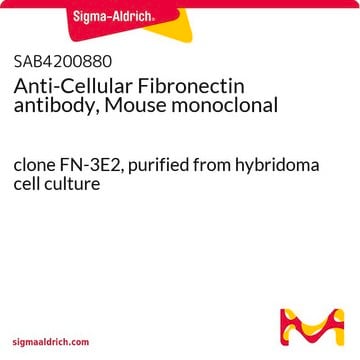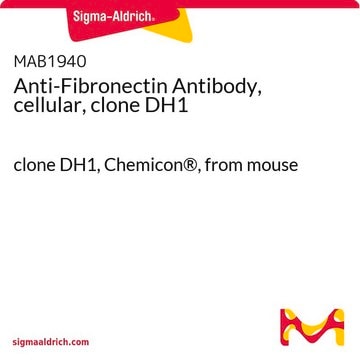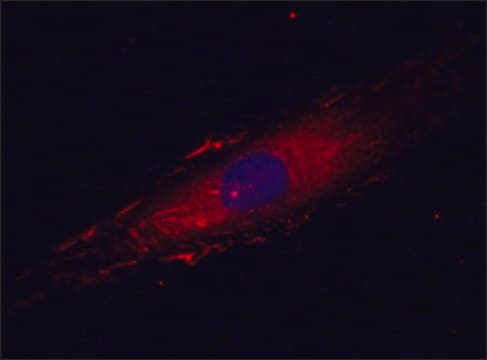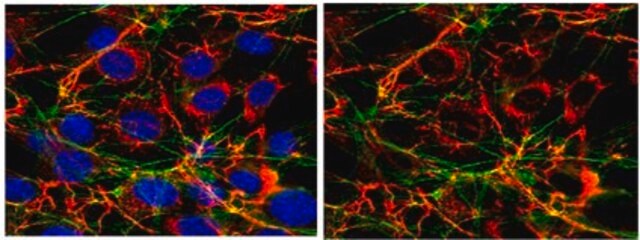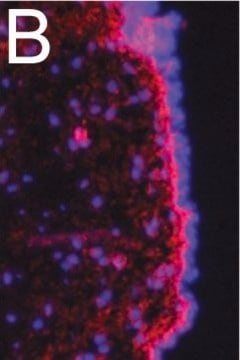SAB4200784
Anti-Cellular Fibronectin antibody, Mouse monoclonal
clone FN-3E2, hybridoma cell culture supernatant
Synonym(s):
Anti-CIG, Anti-Cold-insoluble globulin, Anti-FN
About This Item
Recommended Products
biological source
mouse
Quality Level
antibody form
culture supernatant
antibody product type
primary antibodies
clone
FN-3E2, monoclonal
form
buffered aqueous solution
mol wt
~220-260 kDa
species reactivity
chicken, rat, human, mouse
technique(s)
immunoblotting: suitable
immunofluorescence: 1:2,000-1:4,000 using human foreskin fibroblast Hs68 cells
immunohistochemistry: suitable
isotype
IgM
UniProt accession no.
shipped in
dry ice
storage temp.
−20°C
target post-translational modification
unmodified
Gene Information
human ... FN1(2335)
General description
Immunogen
Application
- immunoblotting
- immunofluorescence
- immunohistochemistry
Biochem/physiol Actions
Physical form
Other Notes
Not finding the right product?
Try our Product Selector Tool.
Storage Class
10 - Combustible liquids
wgk_germany
WGK 3
flash_point_f
Not applicable
flash_point_c
Not applicable
Certificates of Analysis (COA)
Search for Certificates of Analysis (COA) by entering the products Lot/Batch Number. Lot and Batch Numbers can be found on a product’s label following the words ‘Lot’ or ‘Batch’.
Already Own This Product?
Find documentation for the products that you have recently purchased in the Document Library.
Our team of scientists has experience in all areas of research including Life Science, Material Science, Chemical Synthesis, Chromatography, Analytical and many others.
Contact Technical Service


